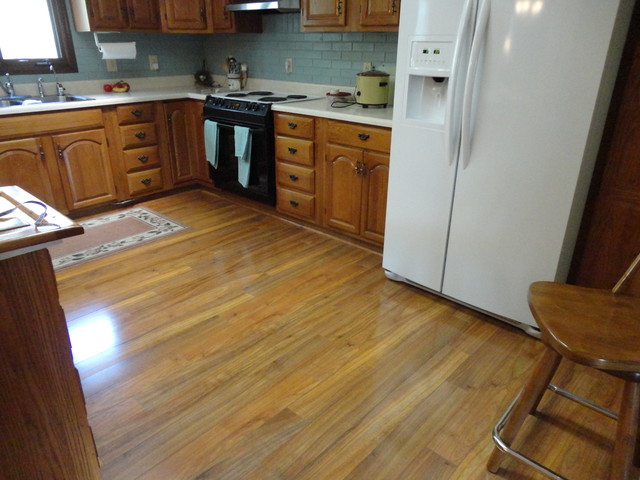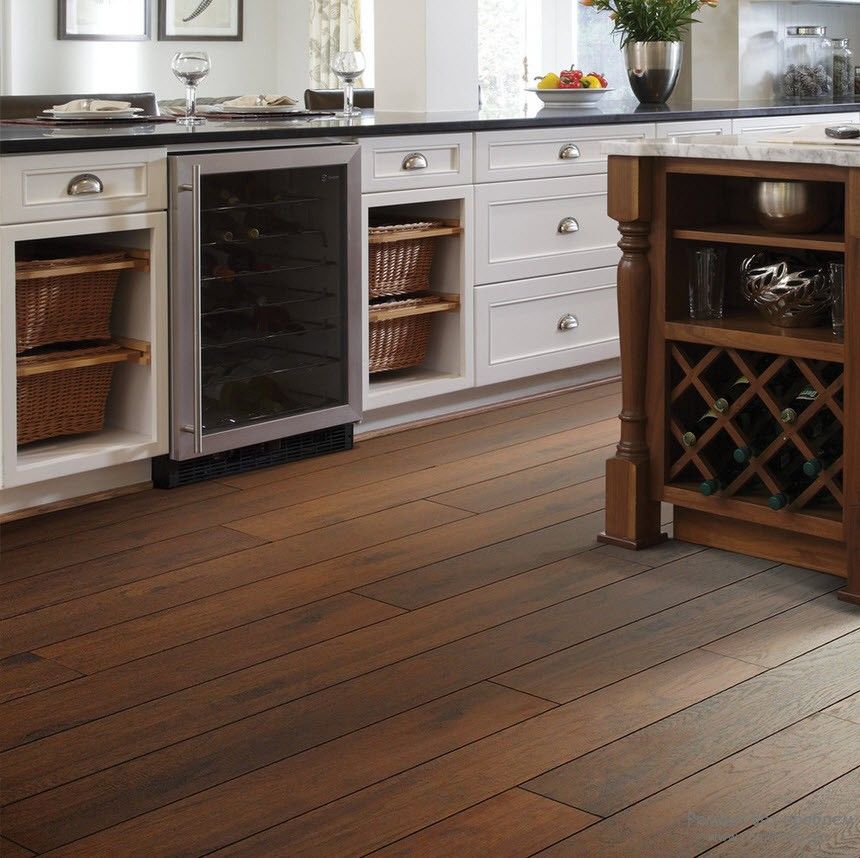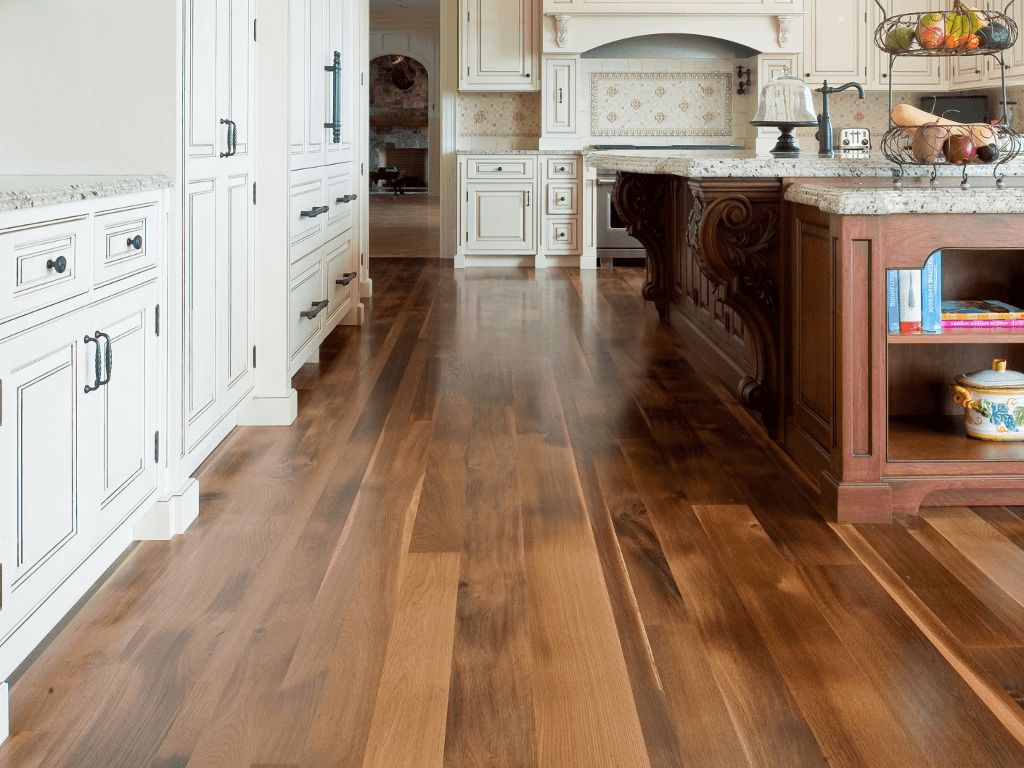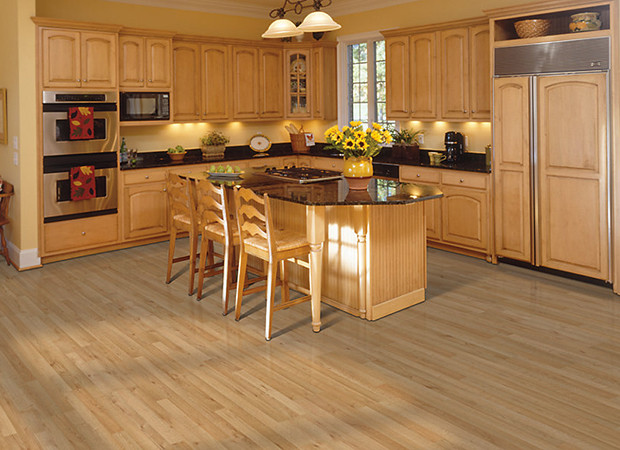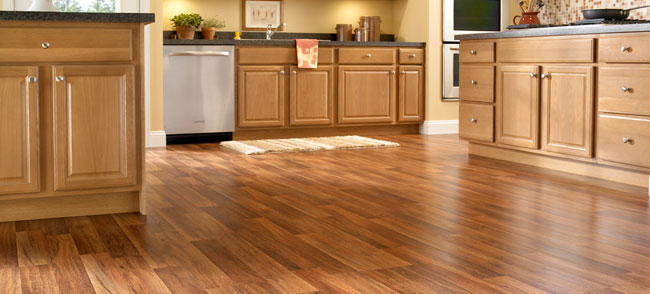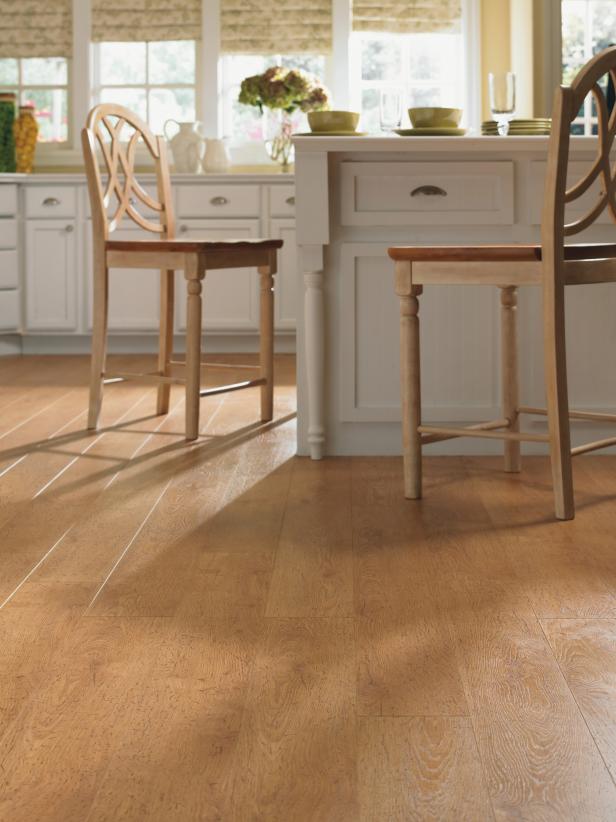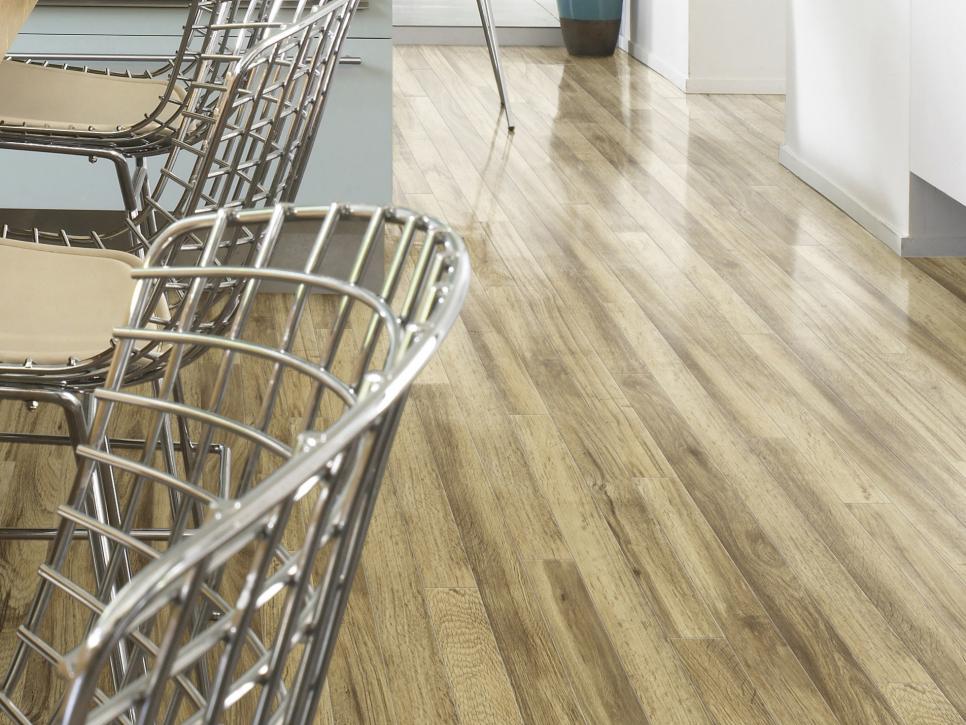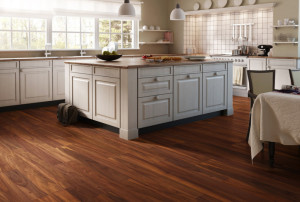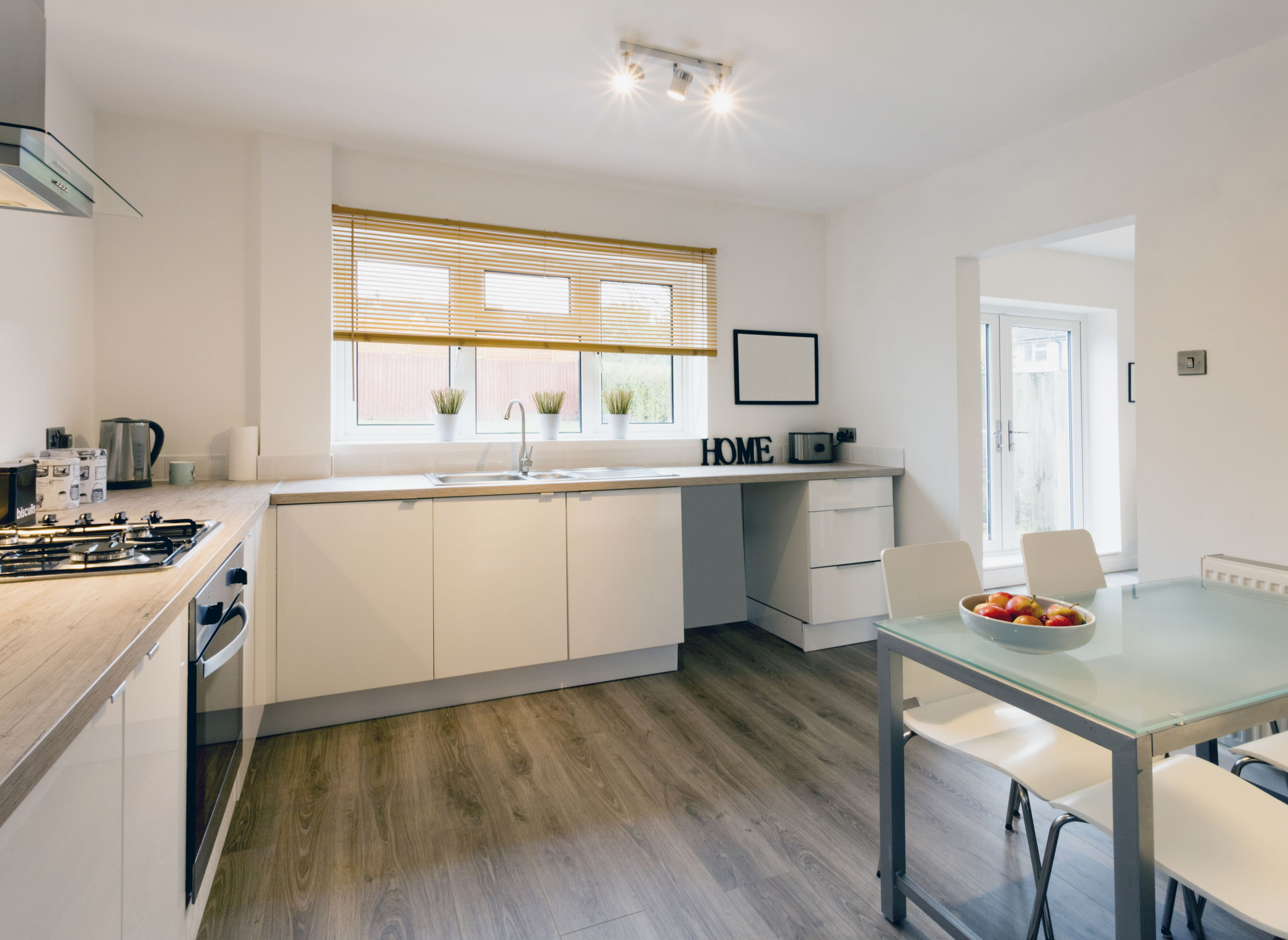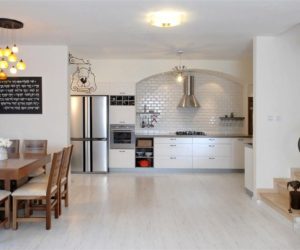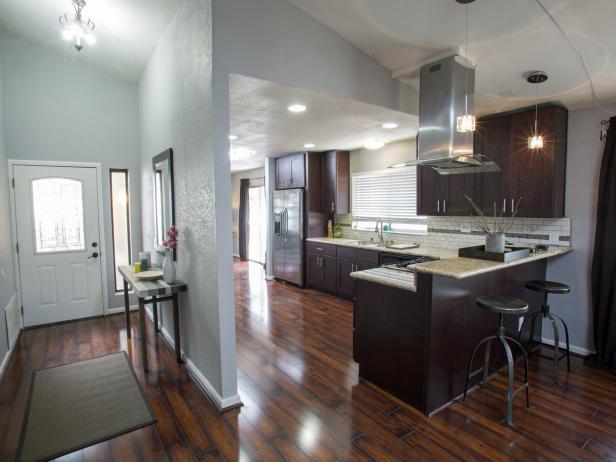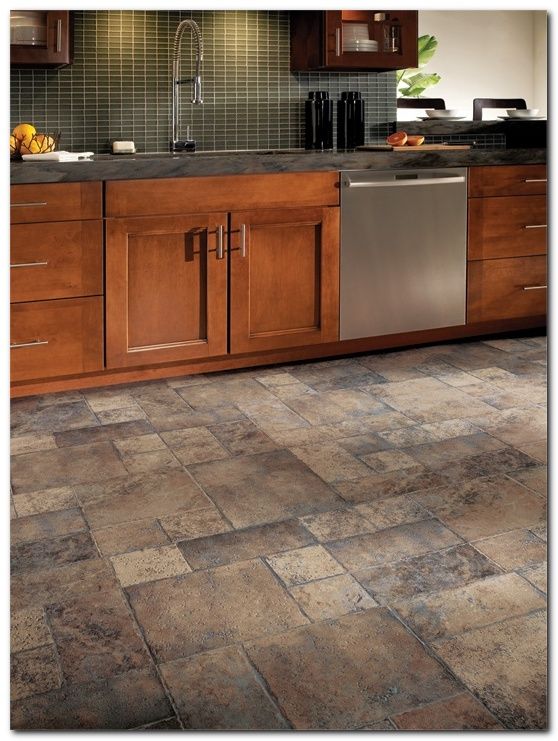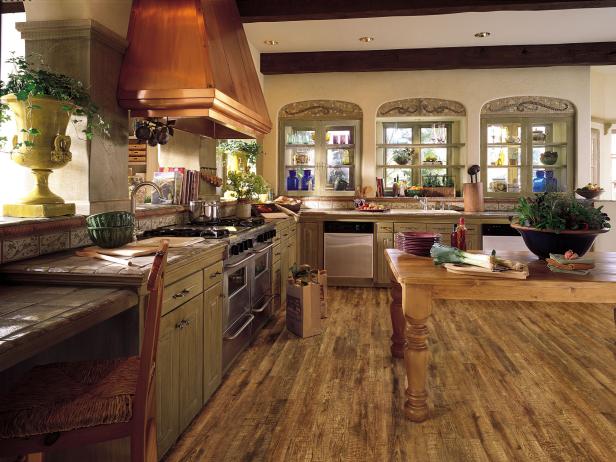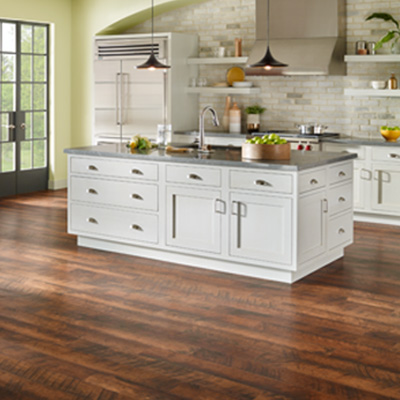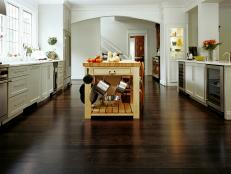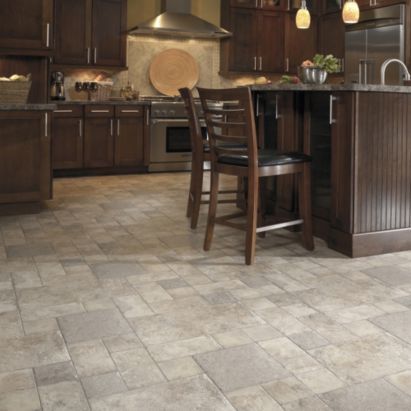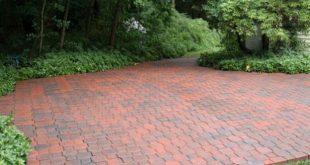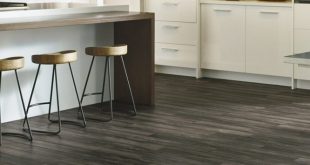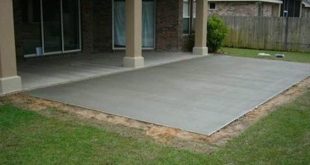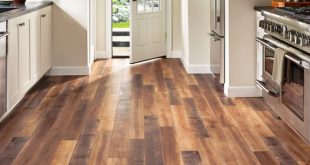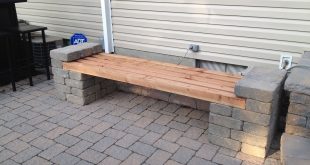There are different opinions regarding laminate flooring in kitchen, some favourable and some unfavourable. Let’s have a look at both the beneficial as well as undesirable features of laminate flooring in the kitchen.
FAVOURABLE FEATURES
Laminate flooring in kitchen can hold on its own against water because a well installed laminate has seams on the top sealed layer and the perimeter is covered with quarter-round or baseboards. Water cannot reach the core. The laminate flooring contains lignocellulosic fibers which are combined with a synthetic resin which acts as a bonding agent. These resins which are inorganic in nature help the core in maintaining shape to some degree when exposed to water.
Laminate flooring consists of three layers, namely the core substrate, image layer and the wear layer. The melamine wear layer provides protection to the delicate image layer. Due to this feature it has been found that the laminate flooring in kitchen resists hard scratches such as those made by a sliding a chair or table.
It is also easy to replace a section of laminate if the need arises. It is a floating floor meaning it is not connected to the substrate and the boards are not joined to each other permanently.
DRAWBACKS
Laminate flooring in kitchen do have drawbacks which need to be discussed too.
Curling is a complaint that many people with laminate flooring make frequently. The tiles often curl at the edges if water is spilled on the material, thereby having a detrimental effect on the floor and the ambience of the room.
Some types of laminate flooring have the danger of slipping associated with them. It is advisable to go for those types of laminate flooring which does not lose its friction even when it gets wet.
De-lamination is another problem where the liquids spilled on the flooring cause the adhesives which are responsible for holding the different layers of material together to separate, thereby causing the tiles to split.
COST AND MAINTENANCE
Laminate flooring for kitchen costs less than other manufactured flooring types. Another feature that reduces the cost is that the tiles can be installed by the customer himself or herself easily without hiring a contractor.
Maintenance is also simple. The liquid spills should be wiped regularly. The wear layer of the material should also be protected by regular sweeping or vacuuming in order to remove the dust particles which damage the wear layer.
 yonohomedesign.com Garden and Interior Design Ideas
yonohomedesign.com Garden and Interior Design Ideas
